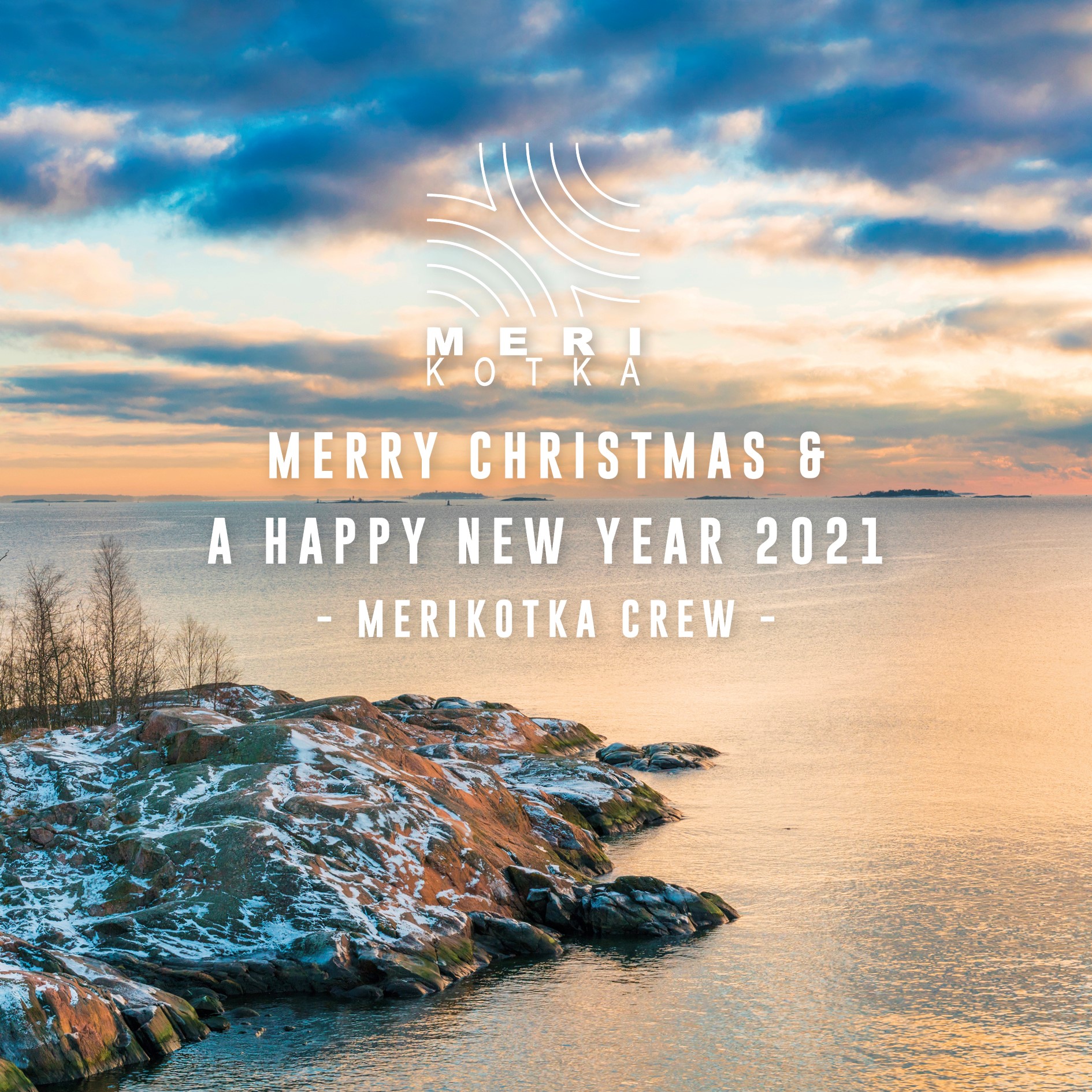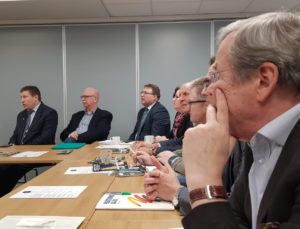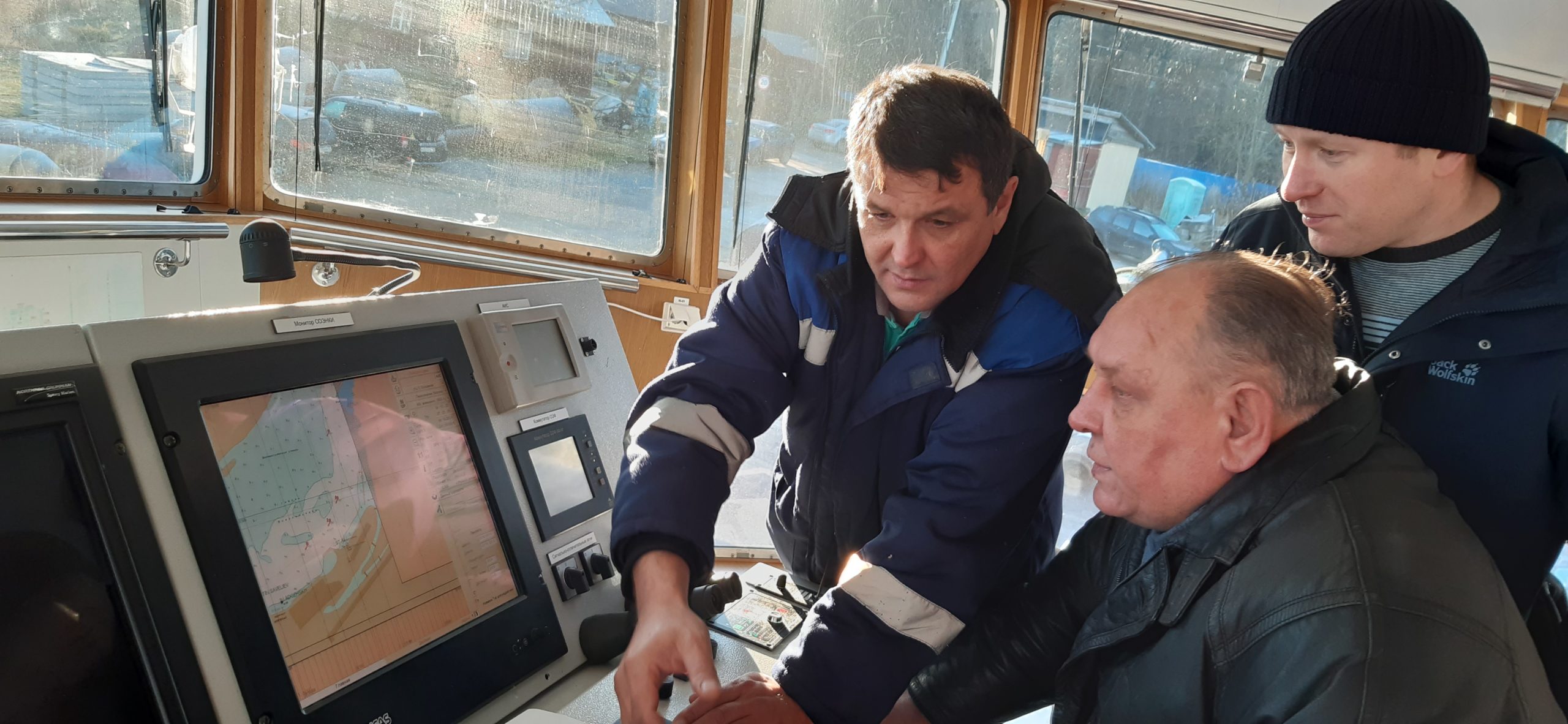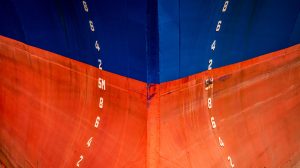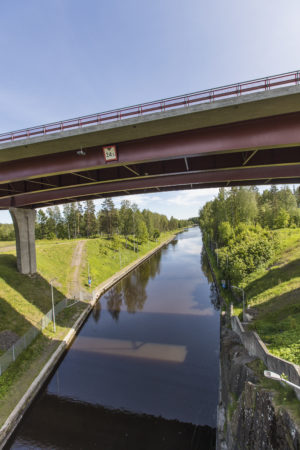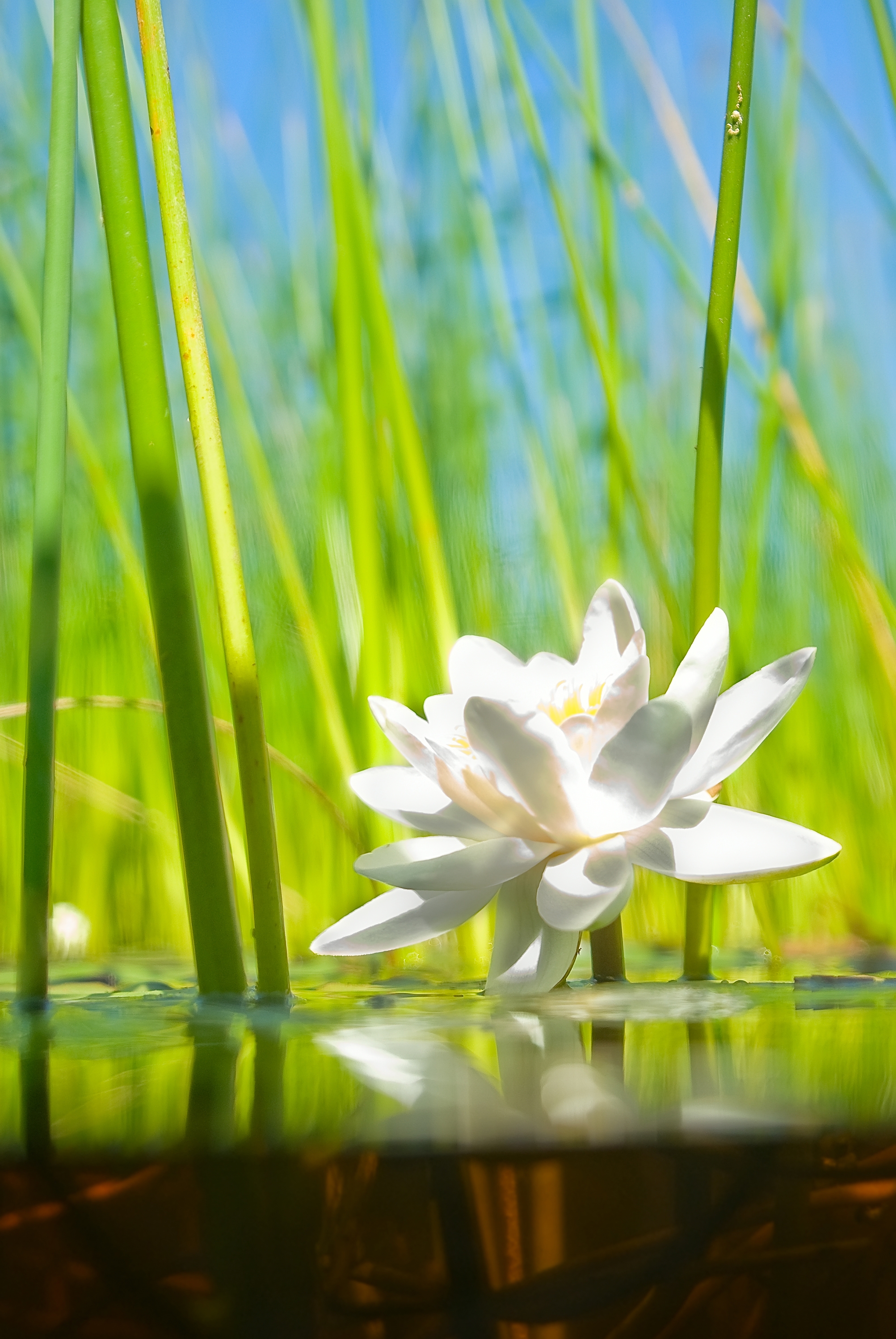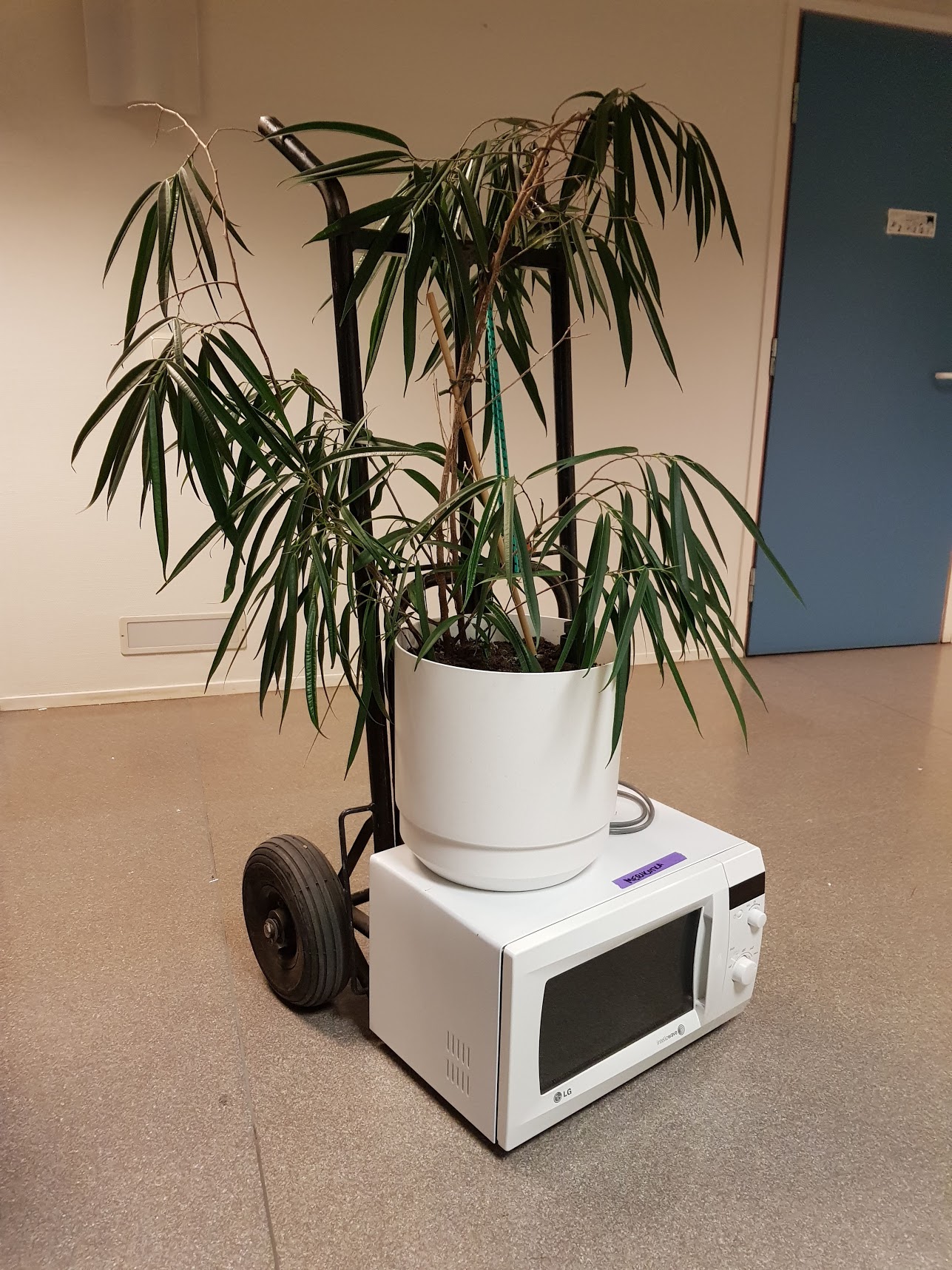 Anna Kiiski
Anna Kiiski
Potential Cargo Flows and Routing in Inland Waterways of Lake Saimaa and Volga-Balt area
The Saimaa Canal has been in operation for 164 years. Today, the largest cargo flows to Saimaa region come from Russia, which is the region’s largest trading partner. The next largest and important partners are the Netherlands, Estonia, Germany, and Latvia, which all have active traffic and trade in the Saimaa region. Cargo is exported even as far as to France and to the United Kingdom from Saimaa. There is no year-round operation in the Saimaa Canal, and therefore the freight figures are not comparable with seaports.
Russia’s inland waterway network is significant, and its south-eastern part in particular is important to Finland. 120 million tonnes of cargo passes through the Russian inland waterway system annually, and there are 131 inland ports in its inland waterway network. For comparison, the total volume of cargo in Finland is about 100 million tonnes. Within the framework of the INFUTURE project, Admiral Makarov State University of Maritime and Inland Shipping has conducted a study of inland waterway traffic and freight flows between Russia and Finland and based on the performed analysis possible potential has been identified.
Inland Waterway Fleet
The current fleet operating on inland waterways is very old, and there is a need for new vessels. The INFUTURE project has concentrated on this issue as well, and the new vessel types for the new Saimaa Canal are under planning. The demand for Volgo-DonMax vessels (max length 141.0 m; max width 16.98 m) is still high. Russian Marine Engineering Bureau is building dry-cargo river-sea going vessels. Total order book is 60 vessels, of which 27 have already been delivered, 22 are under construction, and the rest 11 are in reserve. Most of the delivered ones are modern river-sea going vessels. In addition, there are also two tug barges under construction. Unfortunately, these vessels are too big to navigate via Saimaa canal even after the extension of Saimaa Canal lock chambers.
Development of the Inland Waterway System
Another important issue is also the investment of about EUR 100 million made by the Finnish government for the extension of the lock chambers of the Saimaa Canal. This will allow larger vessels to pass through the Saimaa Canal with bigger cargo volumes. In Russia, there is also a need to develop the inland waterway system. Today the guaranteed depth is 3.6 m in the European side of the Russian Federation, but there are two parts where the depth is even shallower than 3.6 m. The Russian government is investing into inland waterway system to grant the depth of 3.6 m everywhere. There is a need to shift cargo from roads and railroads into inland waterways.
The Russian Federation Strategy for inland development is to modernise and expand their main waterway infrastructure by 2024:
• increase of the capacity of domestic seaports by a third
• increase of the throughput of inland waterways
• the development of the Northern Sea Route
• the development of professional education and training
New cargo flows and routes to Saimaa are of high importance for Russia, including action for shifting cargos from roads and railroads into river-sea going vessels. Inland ports development in both countries and their wider connection into trade will foster local development on multiple fronts: industrial, social, etc. Saimaa’s infrastructural development shall stimulate the replacement of old fleet with new vessels. The limitations of the navigation period on Saimaa and on the Volgo-Balt is also hindering the smooth waterway operations between Finland and Russia.
Harmonisation of Rules and Procedures
There are differences in the legislation of Finland (EU) and Russia on inland water transport and on customs and border procedures. These require some harmonisation in order to develop the passage efficiency via Saimaa Canal. According to the plans of the Russian Federation, the maritime checkpoint will be located exactly in the middle of the canal, and if we do not start a dialogue on the optimisation of customs and border control procedures in advance this may cause problems for shipping from the beginning of operation under the existing rules.
Cargo Volumes via Volgo-Balt, White sea-Onega, and Saimaa
The annual cargo to and from Saimaa is almost 1 million tonnes, and with domestic cargo altogether around 2 million tonnes/year. For comparison, almost 17 million tonnes of cargo is transported annually at Volgo-Balt. Nowadays the main cargo from Russia to Saimaa is timber: raw wood and wood chips. Fertilisers and chemicals as well as iron scrap, metal/iron pigs, and gravel could be potential cargo for this inland route. The most important regions for wood producers are Karelia, Vologda region, and Leningrad region. Neva Hagen shipping company is the Russian company that has been operating with Saimaa cargo for several years.
Pilot Voyage from Saimaa to Cherepovets
In the frames of the INFUTURE project we plan to carry a pilot voyage from Saimaa to Cherepovets with the company Meriaura. For Finnish partners, the idea behind this is to be able to estimate how it is to navigate with their own fleet in the Russian inland waterways. At the moment we are looking for a suitable vessel, and the VolgoBalt Administration has promised to help in defining the right size of the vessel for the pilot. UPM is willing to participate in the INFUTURE pilot project as a cargo provider. It would be a really good addition for the company, if vessels under the Finnish flag could enter the Russian inland waterways. Currently, wood is imported using Russian tonnage, and there is a need for more tonnage.
Request for Cargo Integrator
Within the framework of the INFUTURE project, a customer survey of Saimaa region stakeholders was conducted. In these discussions the environmental issues came up, and also the role of SMEs in shared cargo transport was underlined. The inland waterways could also be used in some project transports. Reliable cargo integrators with experience in a wide range of cargo and cargo groups in Lake Saimaa region are needed and they could develop new business models to serve for example SME. Currently, there is no container traffic in Saimaa, and very little in Russian rivers. European ports compete for the efficiency of transport chains and how to ensure logistics and make the whole chain competitive. Saimaa’s new dimensions and new vessels would also enable container transport. This possibility should be studied more, and there already is a particular interest in special containers.
A cost-effective, safe, and fast transportation route interests the stakeholders.
XAMK is preparing an analytical simulation model that can be used for simulating navigation in the Saimaa on larger ships in different conditions. At the same time, the utilisation of smart devices in navigation can be simulated. Calculations can be made of how long the journey would take by visualising different situations and repeating them. By analysing the results, new businesses can be developed. Within the framework of the project, there has also been discussion on a “transshipment hub” to serve the waterway traffic between Finland and Russia. The digital services play a key role here, with a possibility to assemble complete cargos, book ships and cargo space, get real-time information on fairways and ports, see descriptions of transport chains and alternative routes – and get clear offers on competitiveness of waterways.
New Business Models
New business models and a new attitude towards inland waterway transport are needed. Could there be some kind of incentives to support the companies in shifting their cargo into inland waterways and to develop the whole supply chain environmentally friendly? Lappeenranta, the port of Mustola, is the largest port in the Saimaa region, and has served as a transit port over the years. In addition to the Mustola logistics center, Lappeenranta has a passenger port and a marina, as well as an airport. Mustola has 7 piers and the location is ideal; 10 km from the center and 15 km from the border. Mustola is also significant as a storage area. The Saimaa Canal is close by and has good rail and road connections.
How to further develop Lappeenranta’s Mustola multimodal logistics centre, and specifically how to support the better utilisation of water transport? How to get industry and trade involved? How to manage the development of the entire transport chain and new service concepts, as well as marketing cooperation and information systems? Could the “Port of Saimaa” be the answer to all this?
The idea of the “Port of Saimaa” is to form a network of active cargo ports in the Saimaa region; Lappeenranta, Joensuu, Kuopio, Savonlinna, Imatra, and Varkaus. The “Port of Saimaa” would be presented to the clients and in the market as one big cargo port. If there is a commercial interest, it will be possible to solve most of the organisational and legal problems, including attracting new cargo, and issues on shifting cargo from road and rails into waterways. Continued dialogue and collaborative meetings such as round tables are needed between the stakeholders and administrative authorities.
Author:
Heli Koukkula-Texeira, Finnish Waterway Association
Round Table speakers:
Pekka Koskinen, Partner, Brave Logistics Oy
Anatoly Burkov, Admiral Makarov State University for Maritime and Inland Shipping
Esa Korhonen, UPM Metsä
Toomas Lybeck, South-Eastern Finland University of Applied Sciences
Hannu Lappalainen, Lappeenrannan Satama
Maksim A. Nevezhin, Head of FGU Saimaa Canal
Andrei L. Yushchenko, Marine Freight Bureau
Anton A. Svechkarev, Neva-Hagen
Dmitry S. Neslukhov, Neva-Hagen
The Russian RT discussion was held on 22.10.2020 and the Finnish on 26.10.2020
Text originally published in https://www.vesitiet.org/post/potential-cargo-flows-and-routing
Installation and start of practical testing of Finnish buoys
November 10th was a benchmark for Admiral Makarov State University of Maritime and Inland Shipping (GUMRF) and other partners within the Future Potential of Inland Waterways (INFUTURE) transborder cooperation project.
Thanks to the joint activities of the university and the Administratsiya Volgo-Balt organisation (FBU), the first buoy made by SeaHow by Arctia (Meritaito) Ltd. was installed in the Neva River water area near Schlusselburg.
The event took place as an independent practical experiment, part of the second working package “Inland navigation using advanced technologies and navigation equipment.” The experiment’s goal is to check the usability of the innovative buoys for the year-round operation in the Russian north-west.
The ice testing will be carried out in the Volga-Baltic water area. The installed buoy has an innovative structure that keeps it vertical under the pressure of the current. It also has a double anchor chain fixture. This should keep the buoy vertical despite of river current and ice. If one fixture breaks, then the other should keep the buoy in place. The buoy also has a regulated lamp with an adjustable visibility of two to five miles. More than 25 thousand similar buoys operate in Finland year-round and are not taken out of the water before freeze-up. This saves a substantial amount of resources and the effort of the companies in charge of navigation equipment operation.
Vladimir Karetnikov, head of the Inland Shipping Chair of Admiral Makarov State University of Maritime and Inland Shipping; Anatoly Burkov, a docent at the GUMRF Water Transport Management Chair and INFUTURE project manager; and Yevgeny Nabatov, Arctic SeaHow Meritatito Ltd. representative in Russia attended the buoy preparation and installation. The Nevsko-Ladozhkyi waterways area navigation department and the Volgo-Balt Administration Federal Budget Company’s installation team led by Sergey Rudykh, the head engineer, performed the installation work. The buoy was prepared and correctly installed according to instructions and took its operational position at the edge of the navigation pass.
Next week, another buoy will be installed in the Ladoga Lake water area. The experiment will continue until navigation begins next year.
Text
Vladimir Karetnikov
Admiral Makarov State University of Maritime and Inland Shipping
St. Petersburg, Russia
How can we simulate ship performance in level ice reliably and efficiently?
Doctoral candidate Fang Li, M.Sc. (Tech) will defence his thesis on Fri 06.11.2020 at 12:00 PM.
Dissertation is in the field on marine technology and titled as ‘Numerical simulation of ship performance in level ice: evaluation, framework and modelling’
Read full summary about the dissertation and guidance how to participate the on-line event.
Link to Zoomiin: https://aalto.zoom.us/j/66696860489
Welcome!
OPEN POSITION – We are seeking a RESEARCH DIRECTOR
Kotka Maritime Research Center is seeking a
RESEARCH DIRECTOR
to play a pivotal role in research coordination and implementation in the KMRC focusing on the above outlined KMRC research topics.
The Research Director will act as a member of the KMRC Executive Board and will work actively with Prof. Pentti Kujala (Aalto University), Prof. Osiris Valdez Banda (Aalto University), Prof. Sakari Kuikka (University of Helsinki), Prof. Tommi Inkinen (University of Turku) and Research Managers Olli-Pekka Brunila and Justiina Halonen (South-Eastern Finland University of Applied Science). Active collaboration with research teams of named universities is necessary.
The successful candidate will work closely with the KMRC research teams to: (i) plan the interdisciplinary research by combining the knowledge and skills of research teams; (ii) identify knowledge gaps and research priorities; (iii) produce competitive and relevant research project applications conducting interdisciplinary research; (iv) write and coordinate joint publications and by this highlight the expertise of KMRC research.
The position is permanent and available as agreed. Salary will be commensurate with qualifications and experience. This position is mainly funded through KMRC basic funding.
Invitation to participate – INFUTURE Round Tables
Operational and Safe Inland Navigation Between Finland and Russia
Most international cargo traffic between Finland and Russia goes on land, via roads and railways. Inland waterway connection from Saimaa to Russian inland waterways could constitute a potential environmentally friendly option for transportation between the countries.
Each Round Table includes short introduction to the theme, presentations on findings and time for comments and also for Q & A.
Please note, registration is necessary
Registration here
============
Round Table 1:
POTENTIAL CARGO FLOWS AND ROUTING
Monday 26.10.2020 at 14.00-15.30
Teams- on line meeting
Discussion mainly in Finnish
Speakers
Pekka Koskinen, Partner, Brave Logistics Oy, chairman of the INFUTURE steering group
Anatoly Burkov, Associated Professor, Admiral Makarov State University for Maritime and Inland Shipping
Esa Korhonen, UPM Metsä
Toomas Lybeck, Project Manager, South-Eastern Finland University of Applied Science
Hannu Lappalainen, Port of Lappeenranta
============
Round Table 2:
SMOOTH INLAND NAVIGATION WIHT ADVANCED FAIRWAY TECHNOLOGY
Tuestday 3.11.2020 at 14.00-15.30
Teams- on line meeting
Discussion mainly in Finnish
Speakers
Seppo Virtanen, SeaHow By Arctia (Meritaito) Ltd
Kari Pohjola, SeaHow By Arctia (Meritaito) Ltd
Vladimir Karetnikov, Admiral Makarov State University for Maritime and Inland Shipping
commentary speakers from Russia and from Finland
============
Round Table 3:
FUTURE INLAND WATERWAY VESSELS
Thursday 26.11.2020 at 14.00-15.30
Teams- on line meeting
Discussion in English
Speakers
Pentti Kujala, Aalto University
Fang Li, Aalto University
Jukka Salminen, Aker Arctic Ltd
Marina Lebedeva, Admiral Makarov State University for Maritime and Inland Shipping
Leonid Vishnevskii, Krylov State Research Centre
Jarkko Toivola, Director/Vice President, Alfons Håkans
Please note, registration is necessary
Registration here
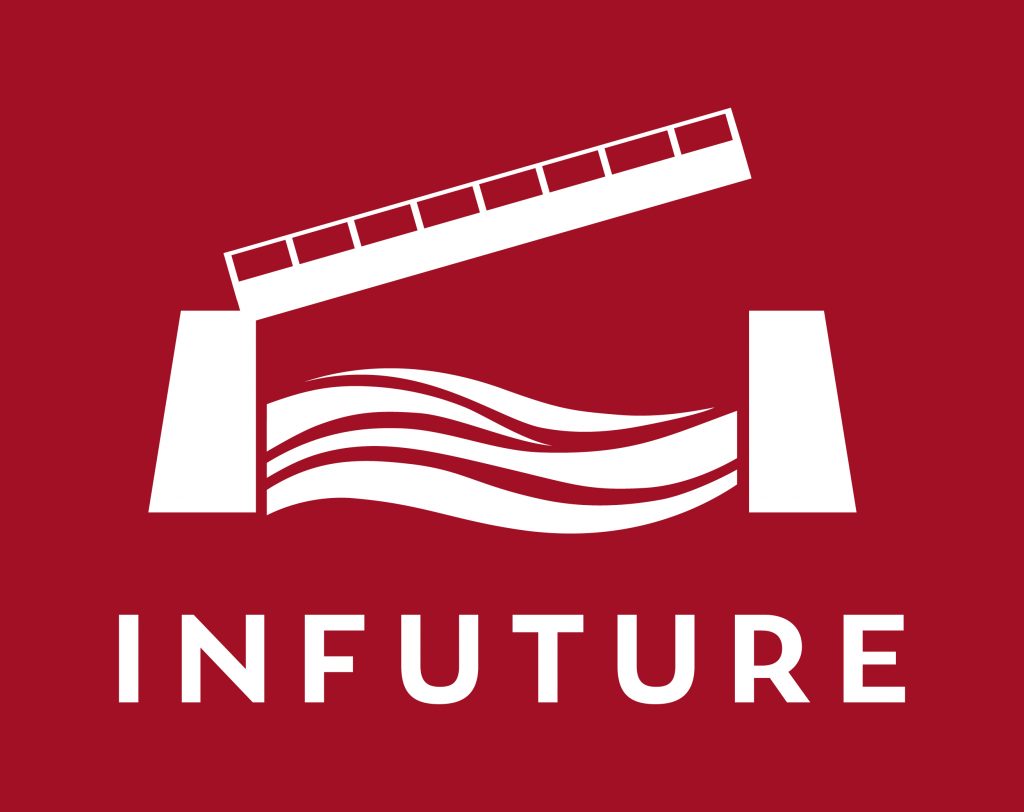
Doctoral dissertation today
Mirka Laurila-Pant, M.Sc. will defend the doctoral dissertation entitled “When do we attain our objectives? On the role of indicators, values and uncertainty in environmental management” in the Faculty of Biological and Environmental Sciences, University of Helsinki, on 4 September 2020 at 12:00. The public examination will take place at the following address: Biocenter 2, auditorium 1041, Viikinkaari 5.
LIVESTREAM: https://helsinki.zoom.us/j/61561004472?pwd=WHpoZVByMGd6eUg0eUVwUDVFc21FQT09
PASSWORD: 929929
Our new address!
Please note our office in Kotka has moved. Our new address is Keskuskatu 7, 48100 Kotka.

